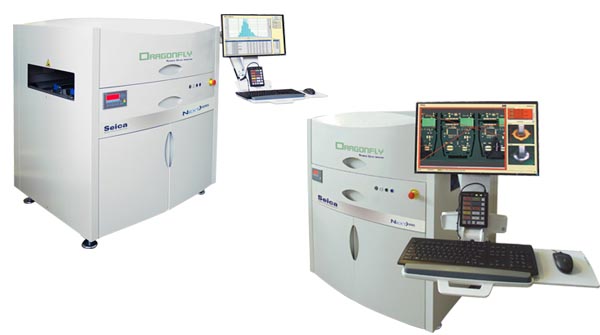THT Solder Inspection

The automatic inspection Dragonfly THT Next> series ensures a quick and complete examination of all joints that may be brazed, soldered or even press fitted together. The combination of multi-colored LED lighting and color scan camera offers a deep inspection of the solder joint meniscus and the shorts detection, while the full scan acquisition of the PCB surface and not only of the components allows the solder balls detection.
Compared to manual inspection, the results of Dragonfly THT Next> series are operator free, but always act objectives and reproducible. The inspection allows rapid feedback of process faults (closed-loop).
The test results are displayed for documented repair of the module on the appropriate repair stations. This results in time and cost savings as well as a significant increase in quality.
The process of PCB assembly has undergone a fundamental change in recent years. The conventional through-hole mounting technology has been increasingly replaced by the SMD technology, however the electronics industry cannot completely eliminate THT technology.
In particular, components that are exposed to high mechanical loads, such as relays, coils, capacitors and power strips are soldered with modern selective soldering or the established scale wave soldering methods.

The first-pass yield of soldering is typically much lower than in the reflow process. Typical errors are, for example, open solder joints, solder bridges and solder bumps. High quality and reliability standards require test and inspection tools that not only provide all the information for a repair facility, but also allow an optimization of the process.
Even with large-scale tests and changing products, a check within the production cycle must take place in order to achieve a high productivity.


